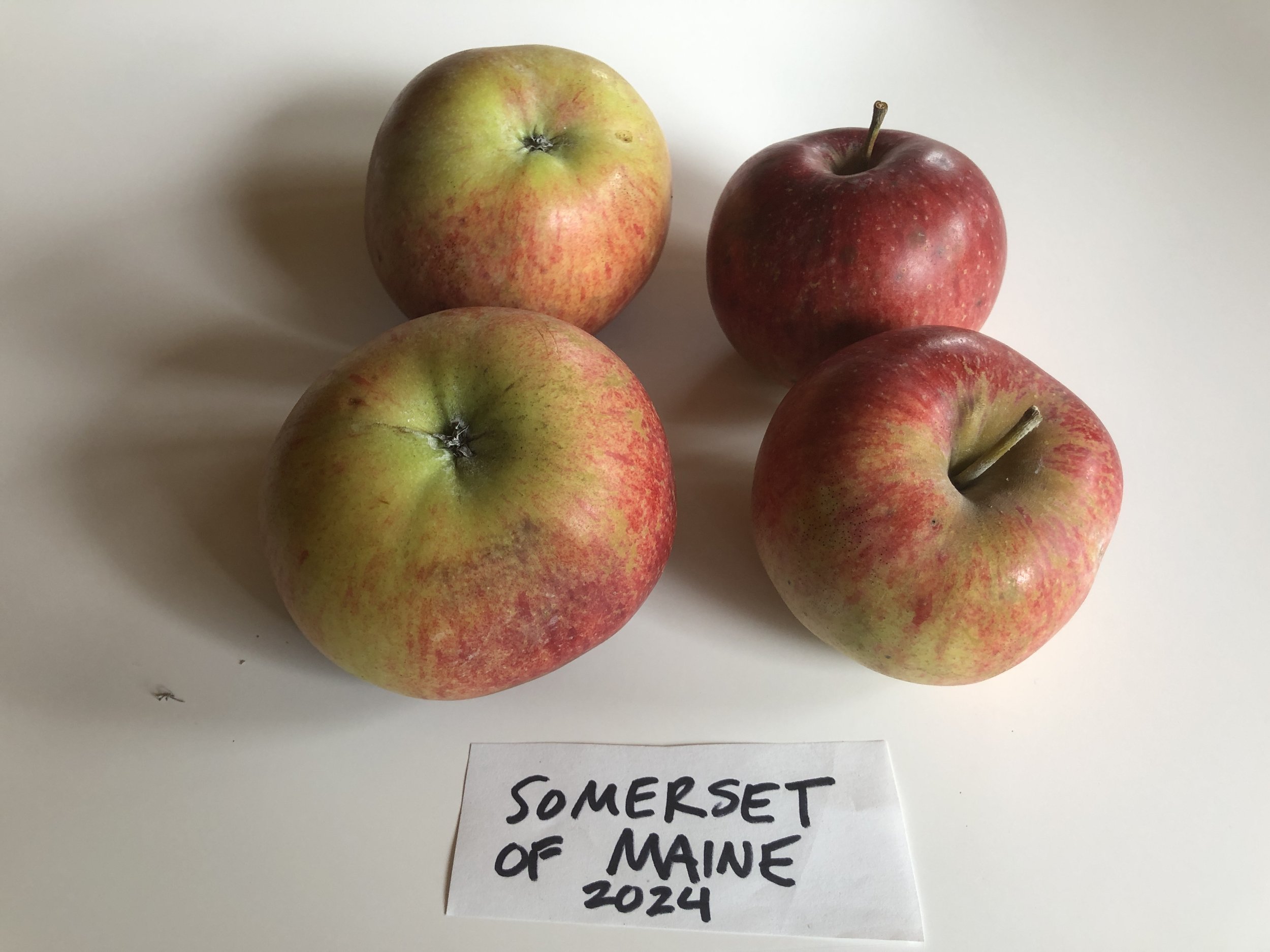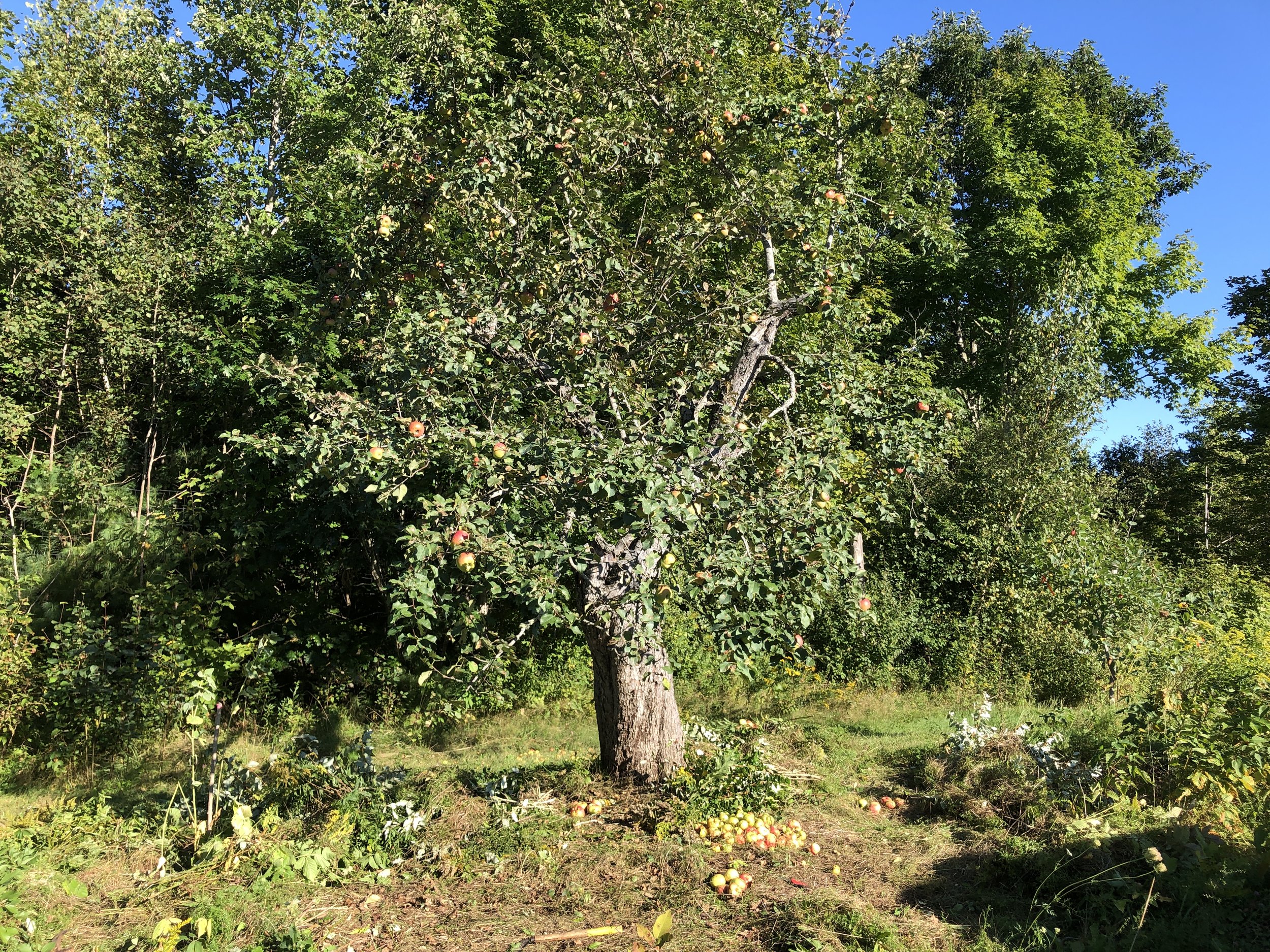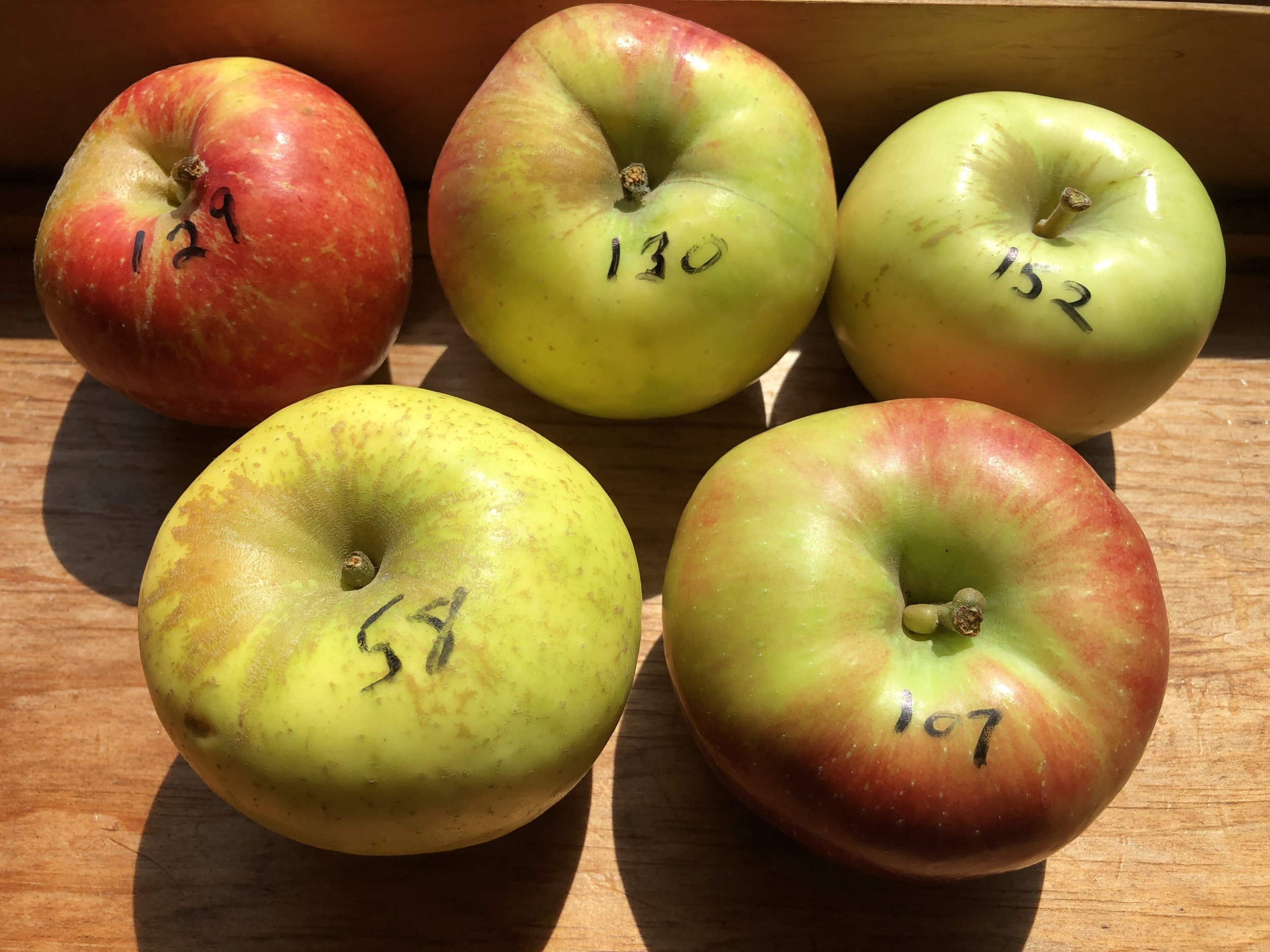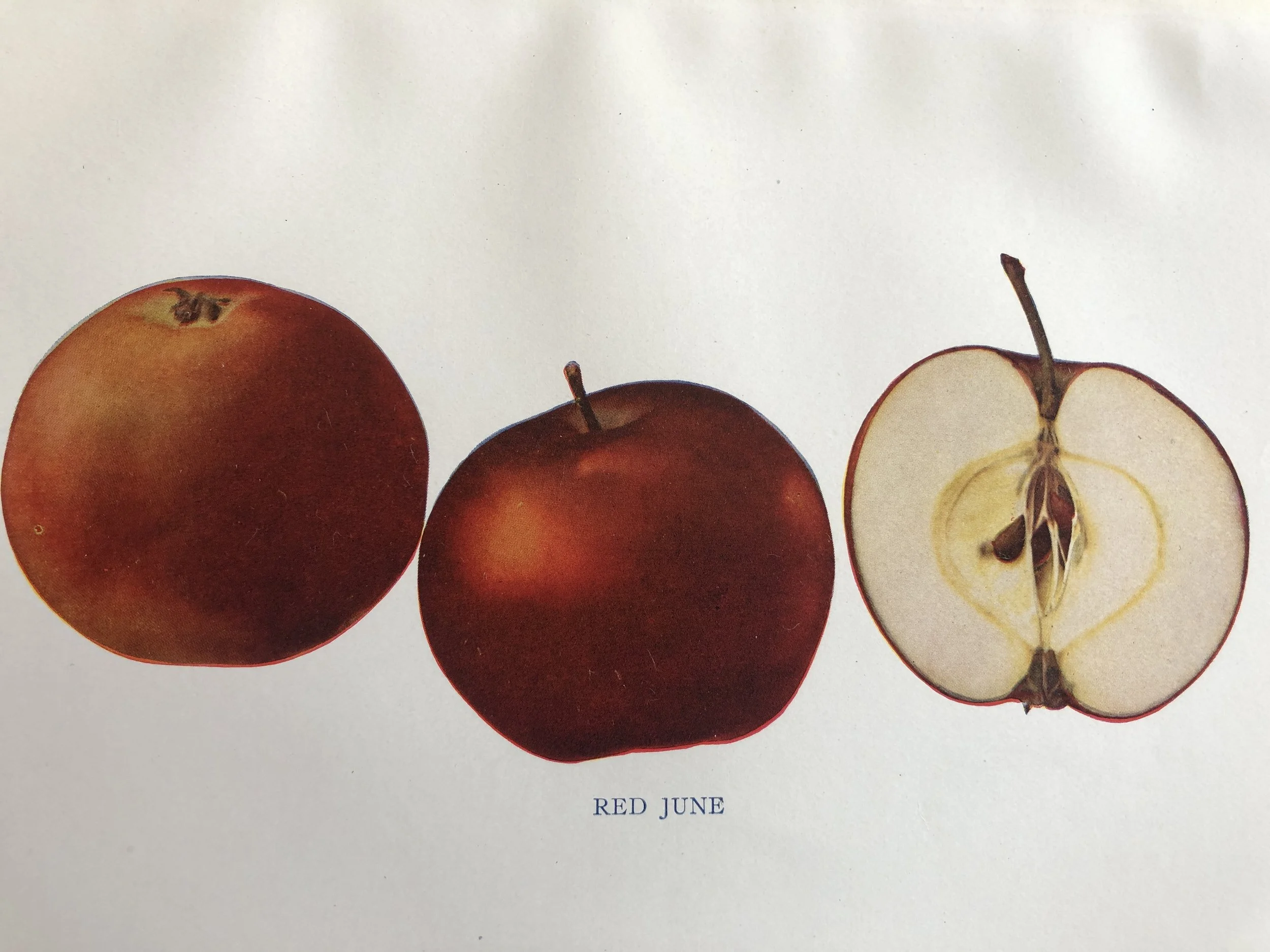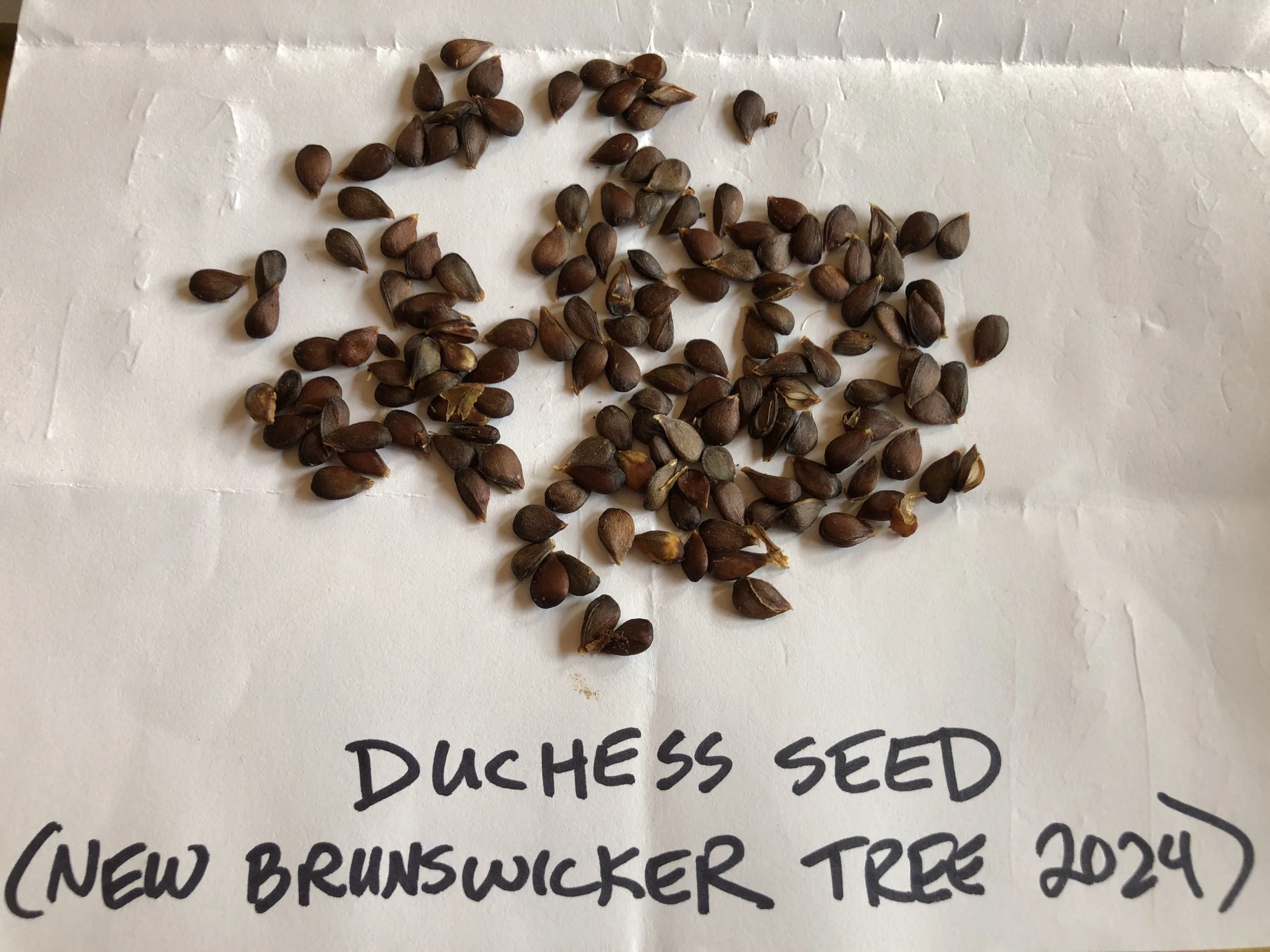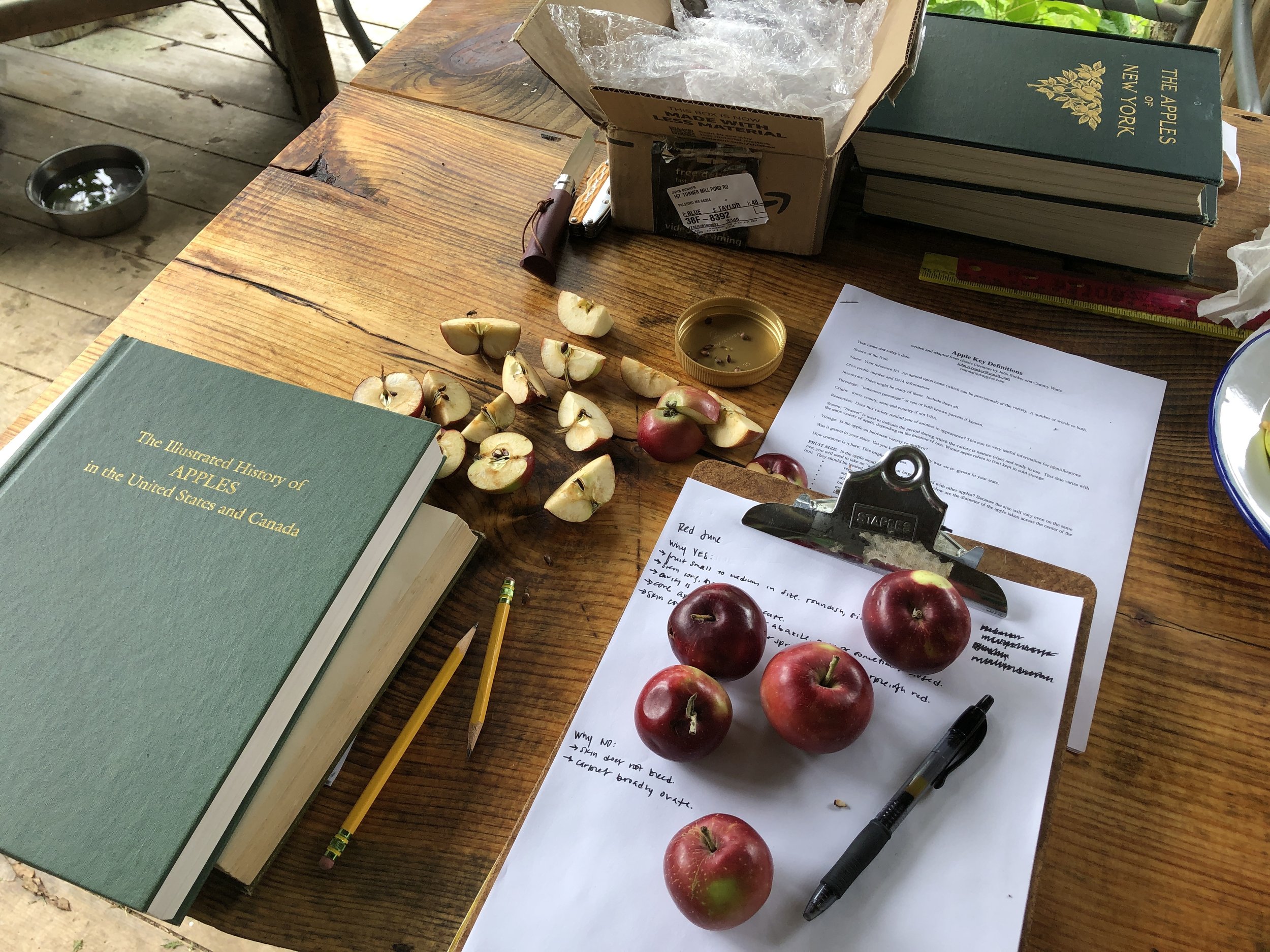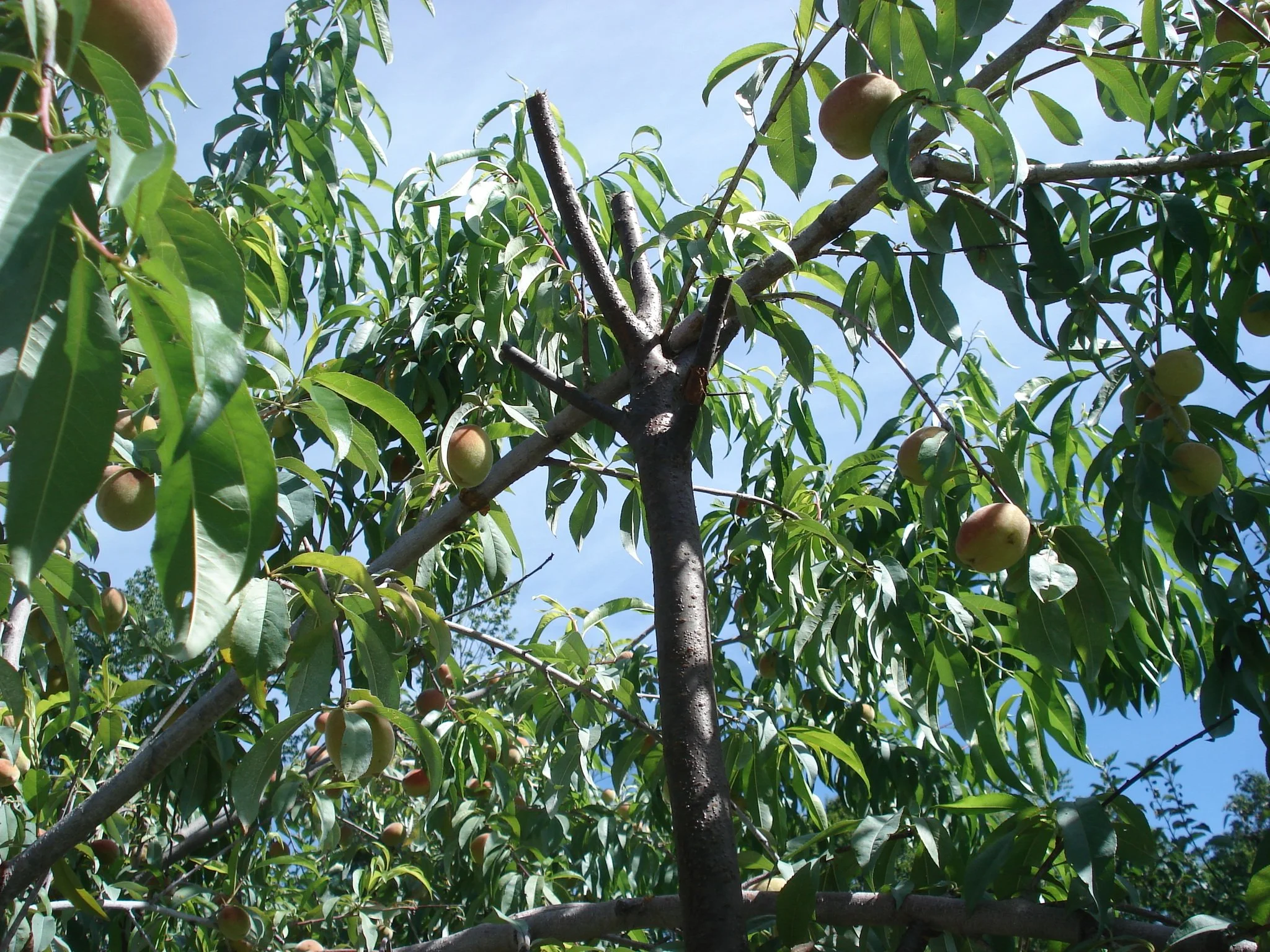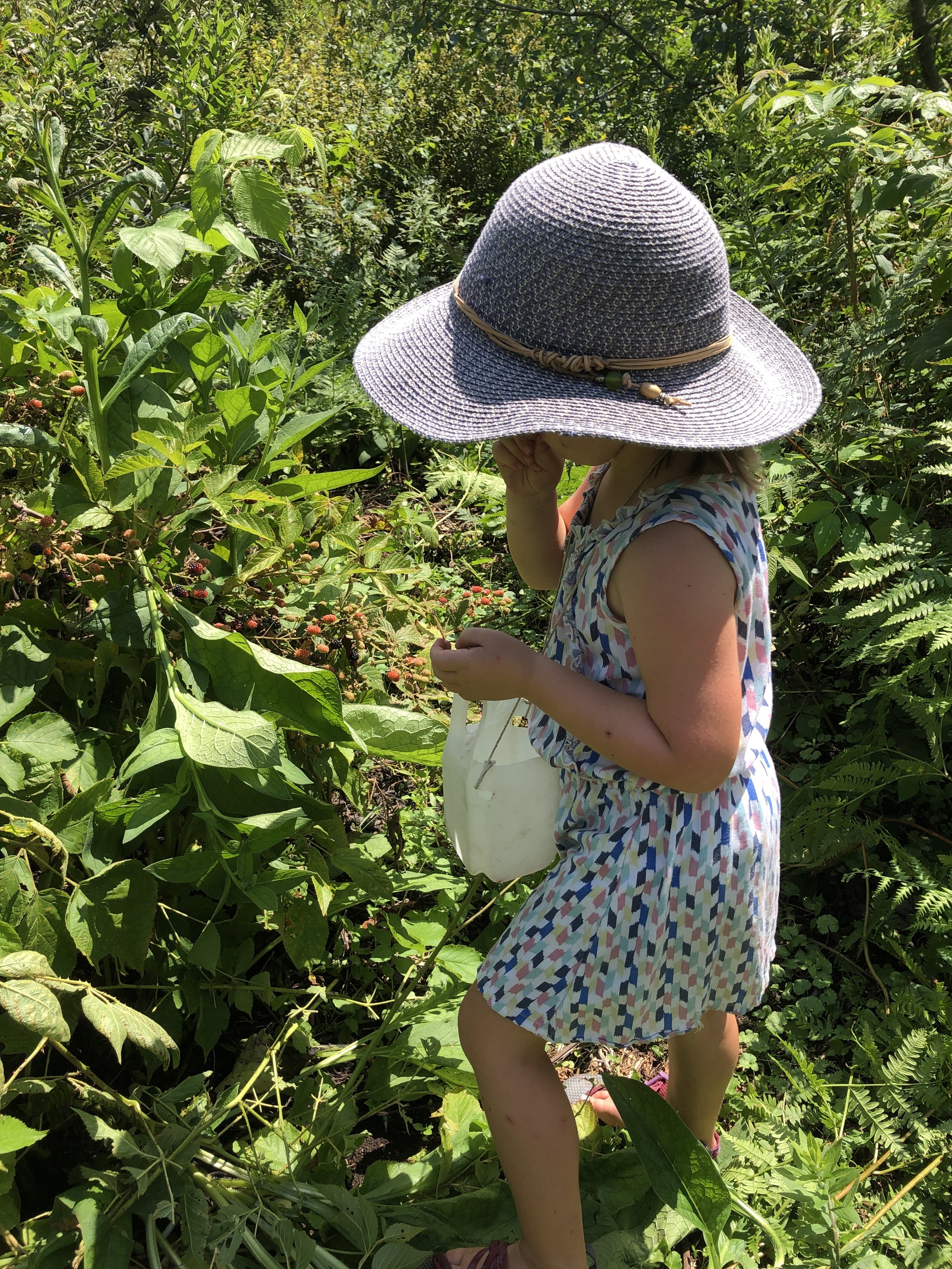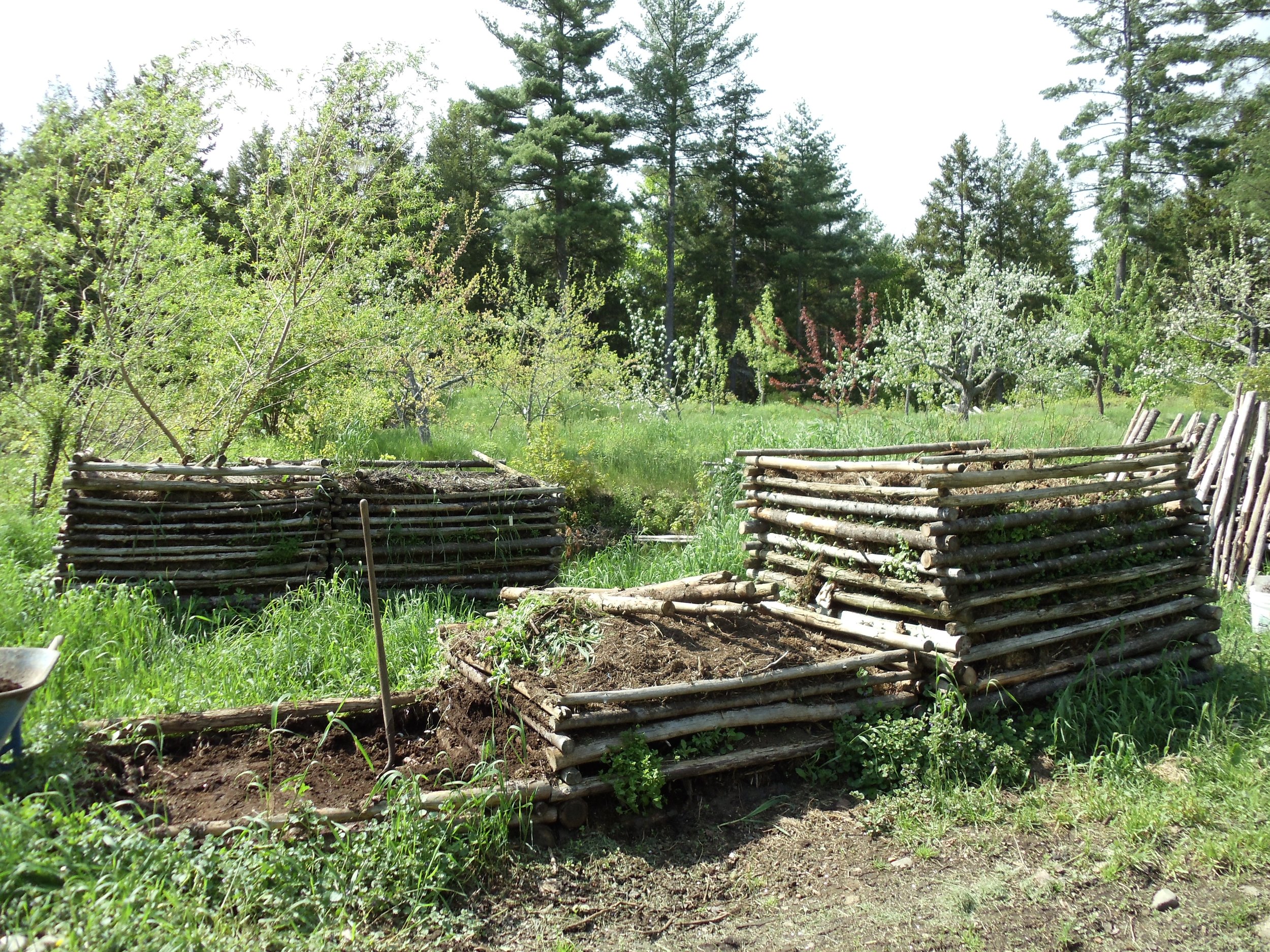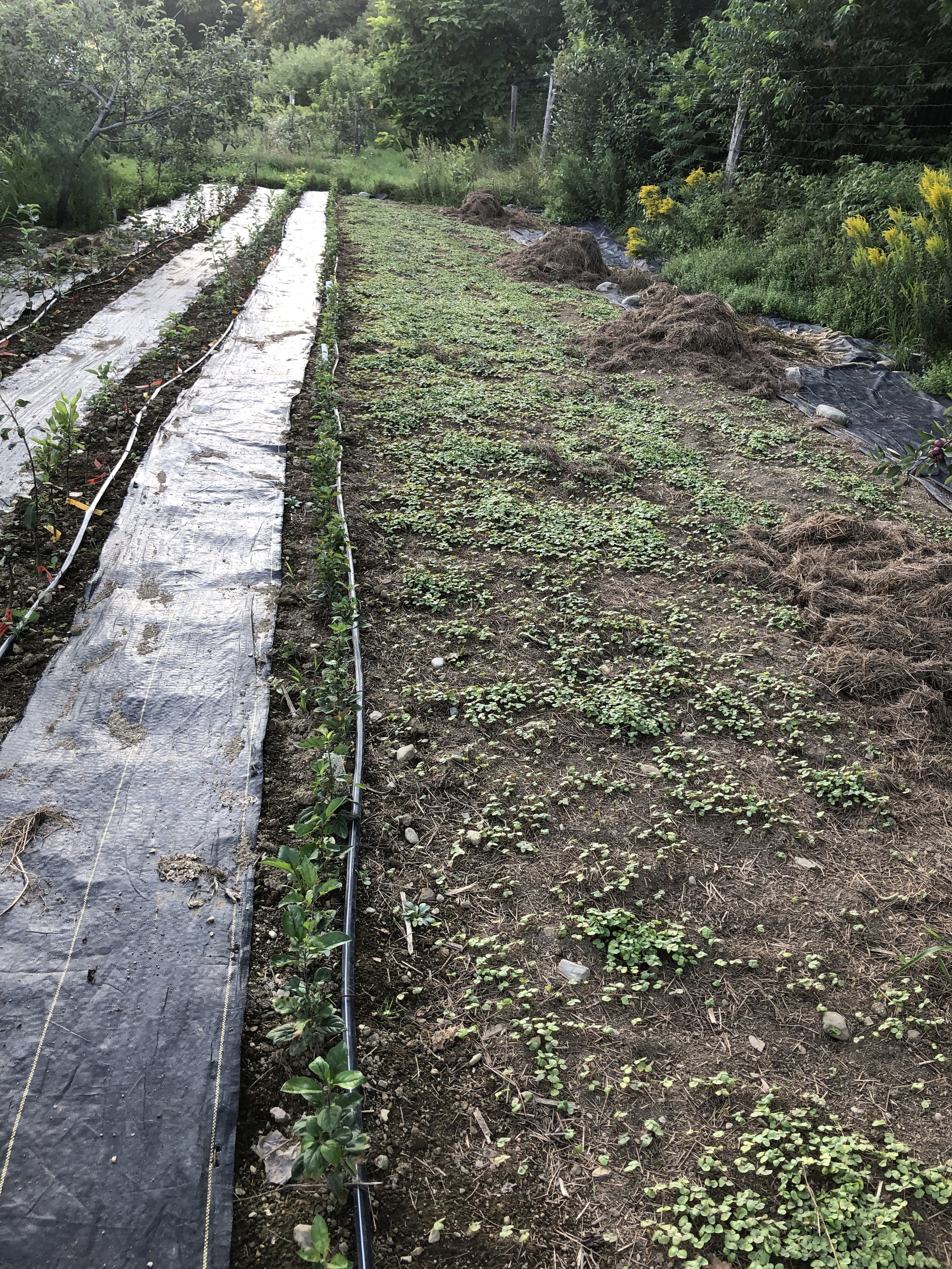TODAY IN THE ORCHARD
This morning I fruit-explored with a local group on Deer Isle, and later gave a mid-afternoon outdoor talk to a large enthusiastic group at the Island Heritage Trust. The trees we visited included both grafted trees and seedlings. All were quite old. Four huge seedlings, now buried in the spruce forest, almost certainly grew up long ago on the edge of what was once pasture. They are still alive though suffering from the shade of the conifers. The owners love the trees and hopefully will remove enough of the tall spruce to get some light back to the apples. The talk at “IHT” was well received. I got a phone call in the middle of the talk and couldn’t figure out how to turn off the ringer. I think the crowd got a kick out of the interruption.
Todd Little-Siebold, Dave Fulton, John Bunker fruit exploring on Deer Isle



